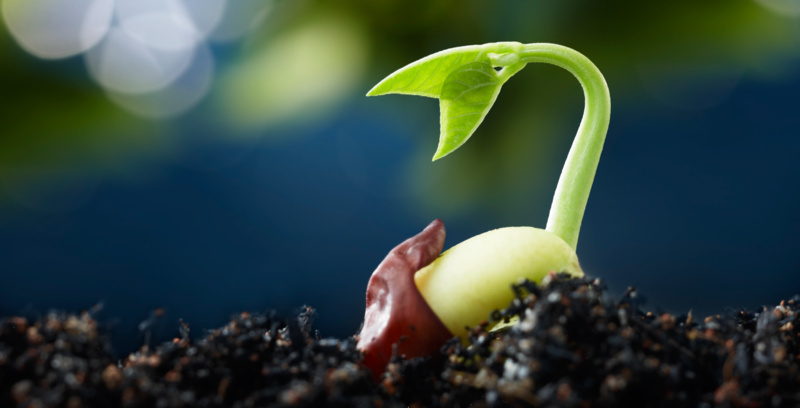इसे हिंदी मे पढ़ें
A seed is a miracle of nature that is waiting for it to happen. Seed contains specific amount of food supply and the vital genetic information needed to become a plant. Seeds exist in a state of dormancy, slowly using up their stored food reserves and at the same time continuously monitors external environment to become ideal for that seed to germinate. Once the ideal conditions occur, the seed breaks dormancy and germinates. As a gardener, our aim is to provide the optimal environment for germination and seedling growth. Let’s discuss the process of successful seed germination.

Seed Germination
For germinating seeds, use a well-drained potting mix, clean containers with drainage holes in the bottom. Fill containers with the potting mix and tap the bottom and sides of containers to let the potting mix settles evenly.
Create a level surface by lightly firming the mix. Do not press or compact the mix which will make it harder for the seeds to get started. Moisten the soil either by watering carefully from the top or letting water soak up through the bottom. Allow excess water to drain away.
Seeds need a certain temperature to germinate (Ideal temperature range for winter flowers, Ideal temperature range for summer flowers, Ideal temperature range for vegetables). The seed of each plant has a specific ideal temperature range within which germination will occur. As much as the temperature is closer to that ideal temperature, the seed germination will be as fast as possible.
Moisture is very important for germination of seeds. They like a moist but not soggy environment. On the other hand, if the soil dries out, the seed will lose whatever water it has absorbed and will die. After sowing the seeds, spray the water on it and cover it with a plastic sheet or bag to seal in moisture. As soon as the seed gets germinated, remove the plastic cover. Check the seedlings twice a day for moisture. Allow the soil surface to dry between watering. Ventilation and air circulation are also important to discourage damping off diseases. Some seeds need light in order to germinate, but many do not (To know more, check here – Winter Flowers, Summer Flowers). Seedlings require about 10 to 12 hours of light a day. Intense light is necessary to prevent spindly or leggy seedlings.
Transplant seedlings to individual post when the first true leaves appear or when they are large enough to handle. Before planting in the garden or outside, gradually acclimate transplants to the outdoors (To know the process, click here). Water immediately after transplanting. If plants wilt, provide some protection with a bamboo stick for a few days.
These suggestions should help in raising strong healthy plants.
HAPPY GARDENING!!!
vegetable seeds germination time, vegetable seeds germination temperatures, vegetable seeds germination, germination temps for vegetable seeds, germination days for vegetable seeds, germination rates for vegetable seeds, how to speed up germination of vegetable seeds, germination period for vegetable seeds, germination chart for vegetable seeds, seed planting depth, vegetable germination chart, flower seeds germination time, flowering seeds germination, why aren’t my flower seeds germination, flower seeds germination time, flower seeds germination temperatures, flower seeds germination, germination temps for flower seeds, germination days for flower seeds, germination rates for flower seeds, how to speed up germination of flower seeds, germination period for flower seeds, germination chart for flower seeds, seed planting depth, flower germination chart, winter flower seed germination, flower seeds growing, winter flower seeds
